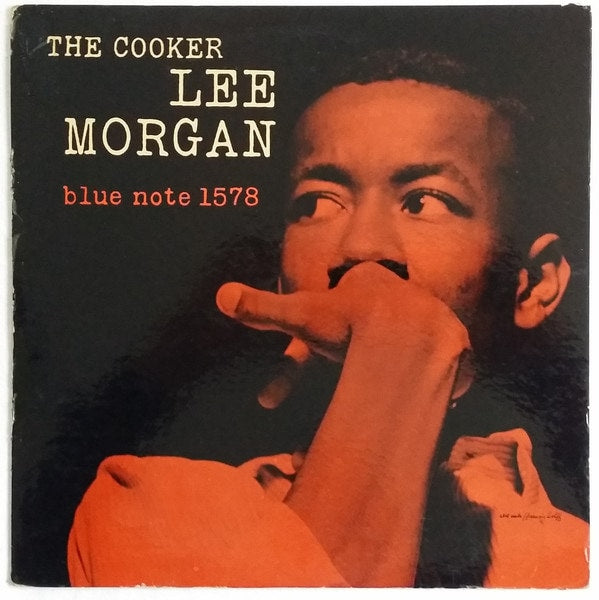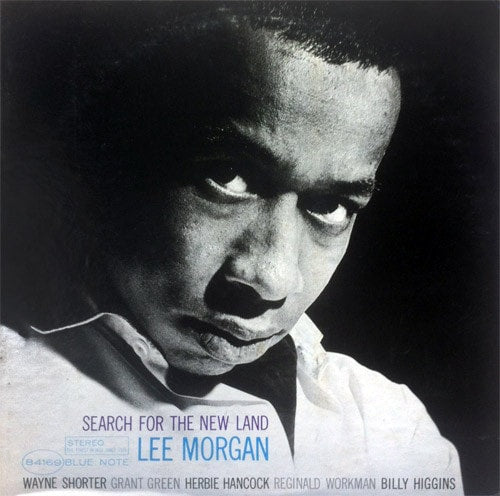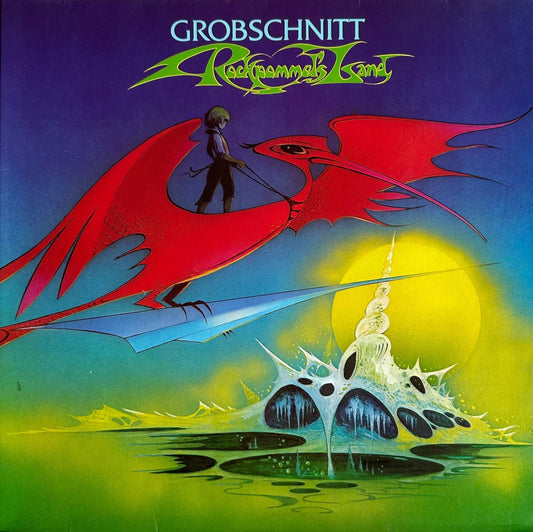[FYI: from Columbia University’s Jazz Glossary—yes, there is such a thing: “Also ‘trading fours,’ etc. Soloists taking turns at improvising, playing for eight (or four, etc.) bars at a time.” I’d somehow never heard the term before—so thanks to Anne for educating me, yet again—Ed.]
In the wee hours of a snowy February morning in 1972, Helen Morgan entered Stub’s Saloon in New York City’s East Village and shot her husband dead. She couldn’t take any more of his drug use and infidelity. Sadly for American music, she’d silenced a spectacularly unique jazz mind. Trumpeter Lee Morgan was only 33 years old.
His main legacy in jazz history is as one of the inventors of hard bop. That was a 1950s reaction to cool jazz; hard bop players thought jazz was getting too classical, so they tried to bring the blues, gospel, and other Afro-centric genres back into their music.
Morgan got off to an impressive start. The Philadelphia native was only 17 when Dizzy Gillespie hired him for his bebop big band. At 19, he was invited by John Coltrane to play on the album Blues Train, a gem among Coltrane’s breathtaking output. At 20, Morgan was tapped to join Art Blakey’s Jazz Messengers, arguably the nest where hard bop hatched.
Like any truly great jazz music, Morgan’s playing is impossible to put into words. Those who try end up with accidental poetry: Trumpeter Dominick Farinacci has said that Morgan played “in waves over the grooves.” Fair enough.
Here are eight glorious cuts featuring the trumpet of Lee Morgan.
- “Along Came Betty”

Moanin’
Blue Note
1958
Existing in one form or another under various names since the late 1940’s, the Jazz Messengers were founded by drummer Art Blakey. Their personnel changed frequently, and the ensemble that Morgan was asked to join included saxophonist Benny Golson, pianist Bobby Timmons, and bassist Jymie Merritt. Morgan stayed with the group until 1961.
Moanin’ was the Messengers’ first release with Blue Note, which would be Morgan’s label for life. Most of the tunes are by Golson, including “Along Came Betty.” From the opening phrase, Morgan establishes himself as a superb ensemble player, working an octave above Golson like they’re part of the same musical being. Morgan’s first solo, at 1:14, has a rhythmic casualness about it that hides its complexity — one of his trademarks.
- “Heavy Dipper”

The Cooker
Blue Note
1957
Morgan’s solo album The Cooker was released in 1958. It’s the first record containing tunes by Morgan, who wrote some 200 pieces during his short life.
“Heavy Dipper” is a Morgan composition that looks both forward and back. The jaunty main theme, especially in the way Philly Joe Jones supports it with hi-hat cymbal, gives the tune an old-fashioned swing flavor. But the seesawing between major and minor and the freedom of the improv tells you it’s bebop. By the time Morgan’s second solo comes around at 5:08, the simple melodic structure has shattered like a champagne bottle against a ship. Jones’ brush patiently strokes that cymbal through the wildness.
- “Running Brook”

Here’s Lee Morgan
Blue Note
1960
It’s no surprise that a Wayne Shorter composition found its way onto a Lee Morgan album. In 1959, after Gorson left the Jazz Messengers, Morgan recommended saxophonist Shorter to take Gorson’s place. It was the start of a deep friendship. For a heartbreaking sense of how close Shorter and Morgan were, watch Kasper Collin’s 2017 documentary I Called Him Morgan.
Shorter does not appear on this album, however. Clifford Jordan plays tenor sax, with Art Blakey himself at the drums. “Running Brook” lets Morgan spin out longer melodic phrases than you often hear in his own compositions. Even in the trumpet solo (2:25), for all its jumping around, Morgan maintains a kind of peace and orderliness that shows another side of him.
- “Gary’s Notebook”

The Sidewinder
Blue Note
1964
With his song, “The Sidewinder,” Morgan simultaneously put money in the coffers of struggling Blue Note Records (the single version hit No. 100 on the pop charts!) and established “soul jazz” as a viable subgenre.
The whole album was written by Morgan, and “Gary’s Notebook” is right up there in quality with the more famous title track. It also has a similarly meandering melodic and harmonic style. As usual Morgan’s ensemble blend, especially with tenor sax player Joe Henderson, is sensitive and expressive. The rest of the band is Barry Harris (piano), Bob Cranshaw (bass), and Billy Higgins (drums).
- “Melancholee”

Search for the New Land
Blue Note
1964
The aching “Melancholee” gives us a glimpse into the darkness and sorrow that seems to have haunted Morgan. Blue Note delayed releasing this album until 1966, although it was recorded before The Sidewinder. This was not the stuff of pop charts, but an unapologetic delving into life’s pain. Wayne Shorter plays sax, and that’s Herbie Hancock on wistful piano and Grant Green on guitar (an instrument Morgan didn’t often play with).
- “Sonic Boom”

Sonic Boom
Blue Note
1967
It took Blue Note until 1979 to release these tunes, but it was worth the wait. The title track, a Morgan composition, opens atmospherically, propelled by Ron Carter’s bass. Billy Higgins creates an unusual texture with his reverberant bass drum.
Anyone who still isn’t sure about Morgan’s technical sophistication on the trumpet should listen to the intricate solo starting at 0:57, notable for the way Morgan restricts himself to a low pitch range.
- “Ill Wind”

Cornbread
Blue Note
1967
American popular song wasn’t really Morgan’s thing, but he made an exception for “Ill Wind” by Harold Arlen (best known for composing The Wizard of Oz). The song had bona fides among African-American jazz musicians: Arlen originally wrote it for a 1934 Cotton Club show, and Sarah Vaughan had recorded it in 1961 (lyrics by Ted Koehler).
On piano, Herbie Hancock – aided by Jackie McLean’s alto sax and Hank Mobley’s tenor – lays down an off-handed, shuffling mood. Morgan slides right in, proving he can “sing” with the best of them.
- “Soulita”

¡Caramba!
Blue Note
1968
The pop side of soul music meets bebop in this up-tempo number composed by Morgan. While it doesn’t have the sexy mystery of “The Sidewinder,” one could argue that it’s even more accessible.
But that populist style didn’t mean Morgan delivered lesser goods. The interplay of his devilish triplet patterns against Cedar Walton’s laid-back piano chords (starting around 1:30) is enough to warrant our attention. Another interesting element – and evidence of Cal Massey’s skills as an arranger – happens when Walton himself takes a solo, and Morgan and tenor sax player Bennie Maupin offer scattered moments of backup.


